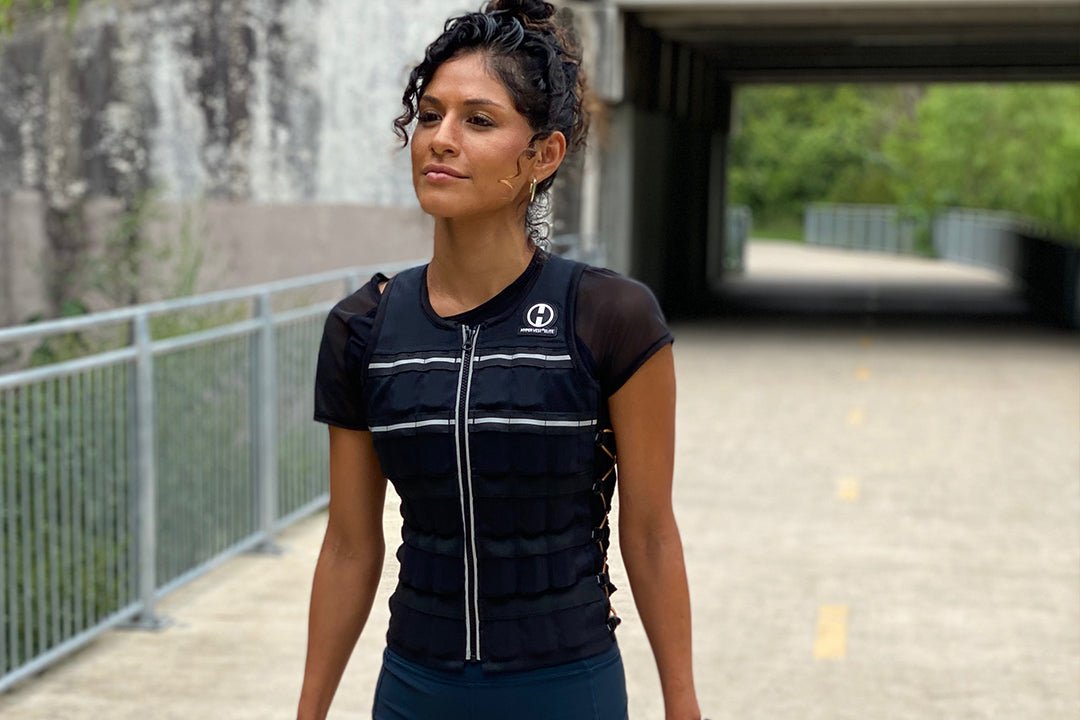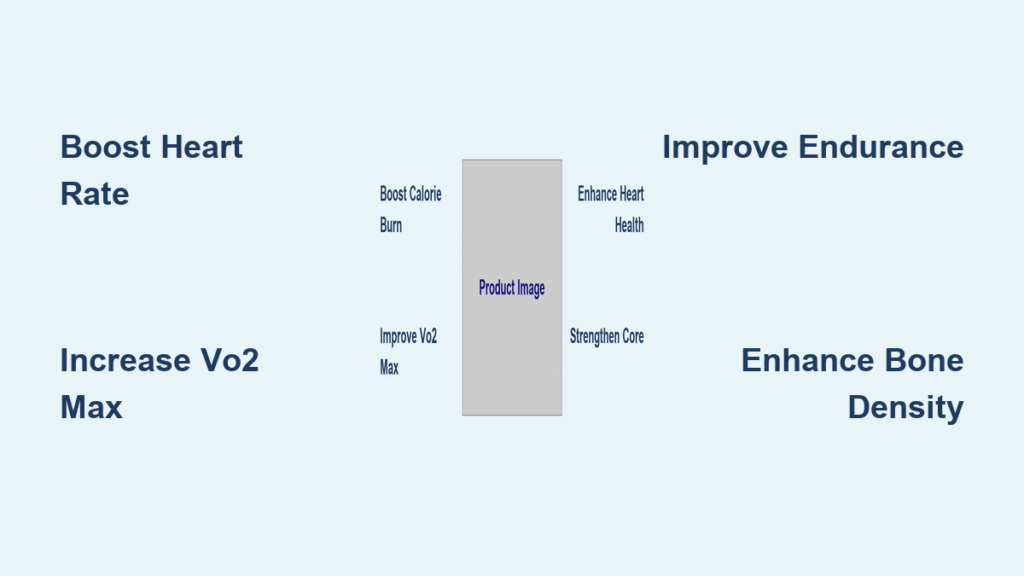You’re walking the same 30-minute route at your usual pace, but your fitness tracker shows a heart rate 15 beats higher than normal and 15% more calories burned. This isn’t a glitch—it’s the immediate weighted vest cardio benefits kicking in. By simply strapping on a vest holding 5-10% of your body weight, you transform ordinary cardio into a high-efficiency heart-pumping session without increasing speed or duration. Whether you’re a weekend walker or competitive runner, this science-backed approach delivers disproportionate cardiovascular gains that compound rapidly when applied correctly.
Research confirms that adding external load triggers instant physiological shifts. Within 60-120 seconds of movement, your heart works harder to deliver oxygen to working muscles under the added resistance. The beauty lies in movement specificity—you maintain natural walking or running patterns while forcing your cardiovascular system to adapt. For every 1% of body weight added through a properly fitted vest, oxygen consumption increases by approximately 1.5%, creating measurable improvements in endurance capacity within weeks.
Why Your Heart Rate Skyrockets With Added Load
The moment you engage in weighted vest cardio benefits, your cardiovascular system responds to the new demand. Even a modest 5% body weight load elevates heart rate by 8-15 bpm during identical walking speeds compared to unloaded movement. This occurs because each stride now requires significantly more oxygen delivery to your leg muscles, forcing immediate cardiac output increases.
Unlike traditional cardio where you must push harder to see gains, weighted vest training creates progressive overload through external resistance. Your heart and lungs learn to operate more efficiently under load, which translates directly to improved performance when you eventually remove the vest. The American Council on Exercise documented this effect when test subjects wearing 10% body weight vests burned 15% more calories during 30-minute walks at 3 mph—achieving fitness results that would normally require walking 0.5 mph faster.
Heart Rate & Oxygen Uptake Boosts That Matter
Immediate Cardiovascular Response During Movement
Within two minutes of starting weighted vest cardio, your heart enters a heightened state of efficiency. Studies tracking treadmill sessions reveal that walking at 3 mph with a 10% body weight vest produces heart rates equivalent to walking 0.5-1 mph faster without load. This means you can achieve optimal zone 2 or zone 3 training effects while maintaining comfortable, lower-impact speeds—perfect for joint-sensitive individuals.
The key indicator is rate of perceived exertion (RPE). At the same walking speed, your RPE will feel 2-3 points higher on the Borg scale with the vest. This isn’t just subjective—measurable oxygen uptake increases by 15% at 10% body weight loading, confirming your cardiovascular system is working significantly harder without changing your pace.
VO₂ Max Improvements That Outpace Traditional Training
The most compelling weighted vest cardio benefits emerge in VO₂ max gains. Dr. Tiana Woolridge’s research at HSS demonstrated obese women performing circuit training with 10% body weight vests increased VO₂ max by 12.7% over eight weeks—35% faster improvement than the non-vest group. This accelerated adaptation occurs because the added load forces your heart to pump more blood per beat while your muscles extract oxygen more efficiently.
Crucially, these benefits plateau at 10-12% body weight. Beyond this threshold, the marginal VO₂ max gains diminish while injury risks rise. For sustainable progress, maintain loading between 5-10% of your body weight during steady-state cardio sessions to maximize cardiovascular returns without compromising joint health.
Smart Loading Strategy for Sustainable Gains

Your Progressive Overload Roadmap
Jumping straight into heavy loading sabotages the weighted vest cardio benefits. Follow this evidence-based progression to build cardiovascular resilience safely:
Weeks 1-2: Start with 5% body weight for 10-15 minutes, twice weekly. Focus exclusively on maintaining neutral spine alignment and natural stride length. This foundational phase primes your cardiovascular system for increased demand without overloading connective tissues.
Weeks 3-4: Increase to 5-7% body weight for 20 minutes, three times weekly. Monitor your RPE closely—keep it at 6/10 or below. This moderate loading triggers cardiovascular adaptations while allowing adequate recovery between sessions.
Weeks 5-6: Progress to 7-10% body weight for 30 minutes, three to four times weekly. Introduce 3-5% inclines to amplify cardiovascular challenge without increasing vest weight. This phase delivers the most significant VO₂ max improvements.
Week 7+: Advanced users can safely reach 10-12% body weight for 30-45 minutes, four times weekly. Integrate interval training (30 seconds fast walking/running followed by 90 seconds recovery) to maximize cardiovascular adaptations.
Critical Progression Indicators
Track these metrics to optimize your weighted vest cardio benefits:
– Heart rate should consistently rise 8-15 bpm above your normal rate at identical speeds
– RPE stays between 5-7 during steady-state work (never exceeding 8)
– No compensatory movements like excessive forward lean or shortened stride
– One-minute post-exercise heart rate recovery exceeds 25 bpm
Best Cardio Modalities for Maximum Heart Impact
Walking & Hiking Protocols That Deliver Results
Walking provides the safest entry point for weighted vest cardio benefits. Begin with alternating 10-minute vest segments followed by 20 minutes without the vest during your walks. Gradually transition to full-duration vest walking as your body adapts over 3-4 weeks.
Hiking with a weighted vest creates exponential cardiovascular benefits. The combination of vertical ascent and external load dramatically increases oxygen demand. Start with 5% body weight on moderate trails before progressing to steeper terrain. Always maintain an upright torso—leaning forward excessively transfers load to your lumbar spine rather than engaging cardiovascular capacity.
Running With Weighted Vests Done Right
Running requires stricter load management to harness weighted vest cardio benefits safely. Never exceed 5-10% body weight during running sessions to avoid dangerous impact forces. Begin with 30-second running intervals followed by 90-second walking recovery periods. Trail running provides superior cardiovascular returns as the uneven terrain engages stabilizer muscles while the vest increases oxygen demand.
Stair & Incline Training Secrets
Stair climbing with a weighted vest delivers unmatched cardiovascular stimulus. Each vertical step forces your heart to work significantly harder against gravity. Maintain strict upright posture and engage your core to prevent lumbar extension. On the elliptical, reduce resistance settings slightly to maintain natural cadence while the vest increases oxygen consumption—this low-impact option is ideal for joint-sensitive users seeking maximum heart benefits.
Safety Essentials for Risk-Free Cardio Gains

Absolute Contraindications You Must Know
Weighted vest cardio is unsafe if you have unstable angina, uncontrolled hypertension, severe heart failure, cervical or lumbar radiculopathy, or are in your second or third trimester of pregnancy. Acute lower-extremity injuries or severe balance disorders also require postponing vest use until fully healed.
Immediate Stop Signals During Sessions
Discontinue weighted vest cardio immediately if you experience:
– Sharp joint pain in knees, hips, or spine
– Numbness or tingling in hands or feet
– Dizziness beyond normal exertion levels
– Unusual shortness of breath relative to effort
– Skin chafing that breaks the skin barrier
Heat Management Non-Negotiables
Weighted vests trap heat significantly—reduce session duration by 25% when temperatures exceed 75°F. Choose vests with mesh backing and light colors to minimize heat retention. Drink 5-10 ounces of water every 15 minutes in warm conditions, and never train in vests during extreme heat advisories.
Bone Density & Longevity Perks Beyond Cardio

Halting Age-Related Bone Loss
The weighted vest cardio benefits extend far beyond heart health. Post-menopausal women wearing 10% body weight vests during daily jumping exercises maintained bone mineral density over five years—while control groups experienced typical age-related declines. This occurs because mechanical loading stimulates osteoblast activity, the bone-building process crucial for longevity.
Preserving Bone While Losing Weight
Traditional weight loss often accelerates bone density loss, especially in adults over 65. Wake Forest pilot trials showed vest-walking seniors maintained hip bone mineral density while losing weight—unlike non-vest walkers who lost 1.2% bone density. This makes weighted vest cardio essential for older adults pursuing weight management without sacrificing skeletal health.
Your First-Week Weighted Vest Cardio Plan
Day-by-Day Starter Protocol
Day 1: 10-minute walk with 5% body weight vest at comfortable pace
Day 2: Complete rest or light stretching only
Day 3: 15-minute walk with same load, moderate pace
Day 4: Rest day
Day 5: 12-minute walk including one gentle hill
Days 6-7: Active recovery without vest (light yoga or foam rolling)
Critical Vest Selection Checklist
Choose a vest with these non-negotiable features:
– Removable ½-lb or 1-lb weight plates for micro-adjustments
– Snug torso fit with zero bounce during movement
– Moisture-wicking, anti-microbial fabric to prevent chafing
– 360° reflective detailing for low-light safety
– Secure zippered pockets for essentials
Bottom line: Weighted vest cardio delivers extraordinary cardiovascular benefits that traditional training cannot match. By following progressive loading protocols between 5-10% body weight, you’ll boost VO₂ max up to 35% faster, burn 15% more calories per session, and strengthen your skeleton—all while moving at your normal pace. Start conservatively with proper form, prioritize safety indicators, and within six weeks you’ll experience measurable heart health improvements that transform your endurance capacity. The simplest equipment upgrade delivers the most disproportionate cardiovascular returns when applied with scientific precision.




